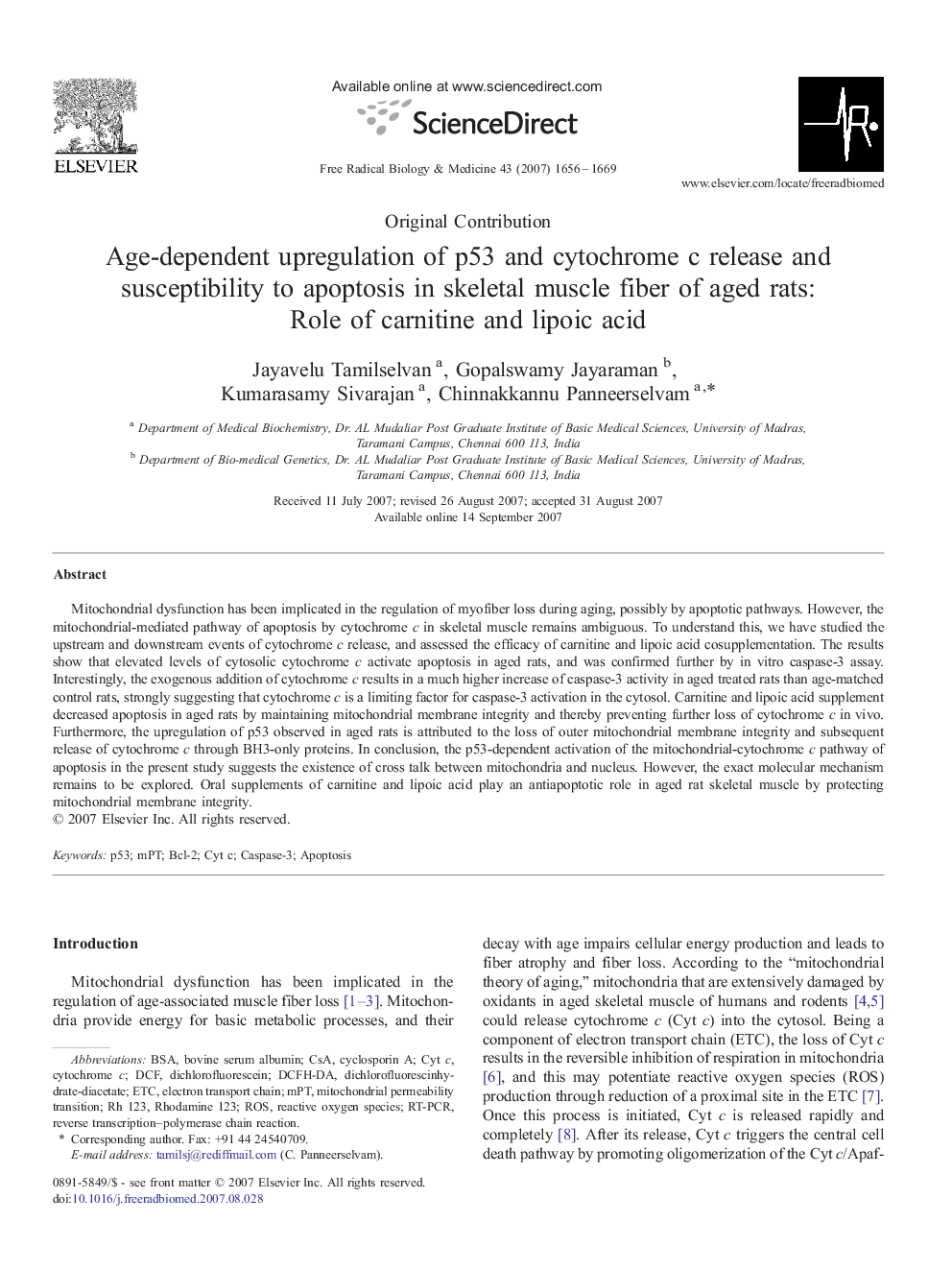| Article ID | Journal | Published Year | Pages | File Type |
|---|---|---|---|---|
| 1910510 | Free Radical Biology and Medicine | 2007 | 14 Pages |
Mitochondrial dysfunction has been implicated in the regulation of myofiber loss during aging, possibly by apoptotic pathways. However, the mitochondrial-mediated pathway of apoptosis by cytochrome c in skeletal muscle remains ambiguous. To understand this, we have studied the upstream and downstream events of cytochrome c release, and assessed the efficacy of carnitine and lipoic acid cosupplementation. The results show that elevated levels of cytosolic cytochrome c activate apoptosis in aged rats, and was confirmed further by in vitro caspase-3 assay. Interestingly, the exogenous addition of cytochrome c results in a much higher increase of caspase-3 activity in aged treated rats than age-matched control rats, strongly suggesting that cytochrome c is a limiting factor for caspase-3 activation in the cytosol. Carnitine and lipoic acid supplement decreased apoptosis in aged rats by maintaining mitochondrial membrane integrity and thereby preventing further loss of cytochrome c in vivo. Furthermore, the upregulation of p53 observed in aged rats is attributed to the loss of outer mitochondrial membrane integrity and subsequent release of cytochrome c through BH3-only proteins. In conclusion, the p53-dependent activation of the mitochondrial-cytochrome c pathway of apoptosis in the present study suggests the existence of cross talk between mitochondria and nucleus. However, the exact molecular mechanism remains to be explored. Oral supplements of carnitine and lipoic acid play an antiapoptotic role in aged rat skeletal muscle by protecting mitochondrial membrane integrity.
